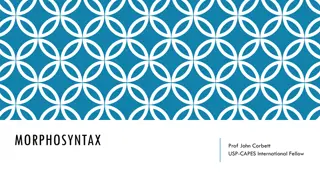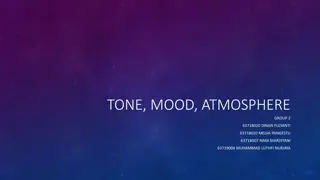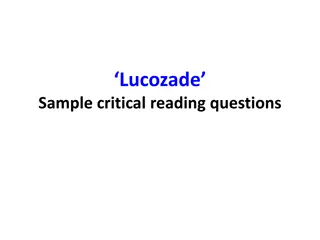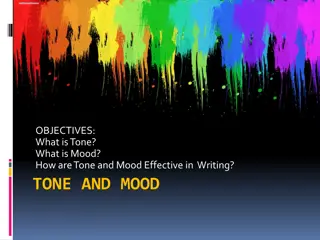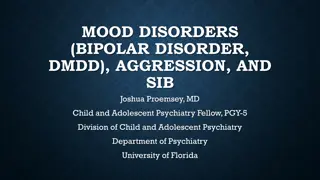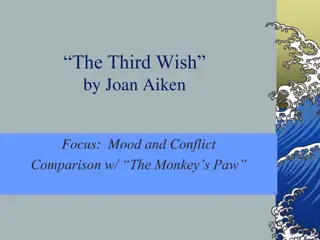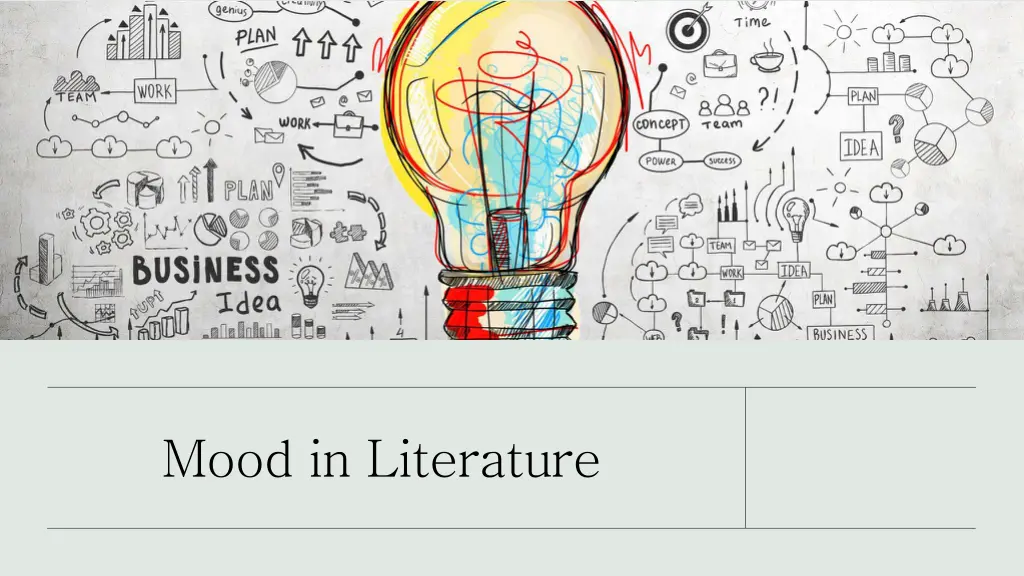
Crafting Mood in Literature: Techniques & Elements
Discover how writers establish mood in literature through techniques like tone, setting, word choice, and subject matter. Explore the impact of setting, imagery, and tone on the overall mood of a story, and learn how word choice influences the reader's emotional response. Experience the interplay between tone and mood, and understand the importance of creating a cohesive and emotionally resonant atmosphere in literary works.
Download Presentation

Please find below an Image/Link to download the presentation.
The content on the website is provided AS IS for your information and personal use only. It may not be sold, licensed, or shared on other websites without obtaining consent from the author. If you encounter any issues during the download, it is possible that the publisher has removed the file from their server.
You are allowed to download the files provided on this website for personal or commercial use, subject to the condition that they are used lawfully. All files are the property of their respective owners.
The content on the website is provided AS IS for your information and personal use only. It may not be sold, licensed, or shared on other websites without obtaining consent from the author.
E N D
Presentation Transcript
How do writers How do writers establish the establish the mood in mood in literature? literature? Mood is an essential literary device to bring cohesion to a story and create an emotional response in readers. This response allows readers to experience emotion and connection within a story, making the literary work more meaningful and memorable. When writers establish mood, it should be consistent with the literary work so that the mood is not disjointed from the story yet remains emotionally accessible and resonant for readers. Though it may seem difficult to achieve mood in a story without being too overt or too subtle for readers, writers can rely on four techniques to craft this literary device (tone, setting, choice of words, and subject matter).
Setting, Imagery, and Mood Setting, Imagery, and Mood A story s setting refers to its physical location and time frame in which it takes place. Setting can have a distinct impact on the mood of a story. For example, if a story is set in an idyllic pasture on a sunny day, readers will be inclined to expect a happy mood. In turn, if a story is set in a futuristic dystopia, readers may expect a mood of tension or hopelessness.
TONE vs MOOD TONE vs MOOD Though Though tone indicates the emotions evoked in the reader by the story. Tone refers to the narrator s attitude toward the events taking place in the story, which can also evoke emotion in a reader. The tone of a narrator can contribute to a story s mood by enhancing the reader s emotional response. tone and mood appear similar, they are distinct and mood appear similar, they are distinct. Mood
Mood vs Tone Mood vs Tone Tone reflects the speaker s feelings or attitude toward the subject, whereas mood the feeling experienced by the reader. mood is Tone is important when it comes to creating mood likely influence the way they tell the story, which in turn influences how readers feel while reading it. mood. The attitude of the speaker will Diction (an author s word choice) can also help to create the mood a piece of literature. Every word carries a positive, negative, or neutral connotation, so authors must choose their words carefully to create their intended atmosphere. - https://www.tckpublishing.com/mood/ mood and atmosphere in
Word Choice and Mood Word Choice and Mood Word choice in a story is key to establishing its mood. This includes the way words sound to a reader, perhaps harsh or loving, and the use of connotative meanings of words. For example, if a writer states that a family returned to their house, the implied meaning is that the family has come back to the structure in which they live. If, instead, a writer states that a family has returned to their home, the implied meaning is that the family has come back to a place of comfort and belonging. A writer s choice of words is significant in establishing a story s mood by evoking emotional responses in readers.
The Subject Matter and Mood The Subject Matter and Mood The subject matter of a story can also help establish its mood. For example, a story about war is likely to feature a sad mood, whereas a story about romantic love is likely to feature a happy mood.
As a literary device, mood refers to the emotional response that the writer wishes to evoke in the reader through a story. This response can range anywhere from feelings of calm, fear, anger, or joy depending on the literary work. In general, short stories and poems feature a consistent mood due to their length.
Mood Words Mood Words As a literary device, mood represents the emotional quality of a story that is created through the writer s use of language. Mood can be evoked through description of events in a story, its setting, reactions among characters, and even through the story s outcome or resolution of the conflict. Here are some adjectives that can describe the mood: Joyful angry pensive resentful Nervous hopeful lonely nostalgic Peaceful calm sentimental hopeless Melancholy cheerful stressed optimistic Panicked sorrowful anxious
More Mood Words More Mood Words Anxious Anxious Calm Calm Cheerful Cheerful Depressing Depressing Eerie Festive Foreboding Foreboding Frightening Frustrated Hopeless Hopeless Humorous Idyllic Joyful Joyful Light-hearted Lonely Melancholic Melancholic Ominous Optimistic Panicked Panicked Peaceful Pensive Pessimistic Pessimistic Reflective Restless Romantic Romantic Sad Sentimental Stressed Stressed Tense Uneasy
More about MOOD More about MOOD Novels can feature more than one mood, although readers will Novels can feature more than one mood, although readers will typically identify an overall emotional response to the work as a typically identify an overall emotional response to the work as a whole. Mood allows a writer to create a memorable and whole. Mood allows a writer to create a memorable and meaningful story with which the reader can connect. In addition, meaningful story with which the reader can connect. In addition, writers reveal their artistic use of language and creative skills writers reveal their artistic use of language and creative skills when establishing the mood of a literary work. when establishing the mood of a literary work. www.literarydevices.net www.literarydevices.net
Why is mood important? Why is mood important? mood evokes emotional responses in readers; it helps to establish an emotional connection between a piece of literature and its audience. Once readers feel emotionally impacted by a piece, they will be better able to understand the central message, or theme of the work. - https://www.tckpublishing.com/mood/


